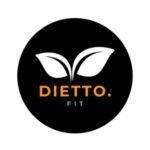Bone Health and Osteoporosis
Our Solutions
- Sports Nutrition
- Renal Nutrition
- Oncology Nutrition
- Corporate Nutrition
- Cardiovascular Disease Diet
- Therapeutic nutrition
- Naturopathy
- Gerontology and geriatric
- Pediatric nutrition
- Gastrointestinal (GI) disease nutrition
- Liver and pancreas
- Pancreas Health and Nutrition
- Obesity and underweight nutrition
- Infections and fevers nutrition
- Anaemia nutrition
- Pre and post pregnancy nutrition
Health Conditons

Bone Health and Osteoporosis
Bone health is crucial for overall well-being, and osteoporosis is a condition that affects bone density, making bones weak and fragile. Here are some key points about bone health and osteoporosis:
Bone Composition: Bones are composed of collagen, a protein that provides a soft framework, and minerals like calcium and phosphorus, which add strength and hardness to the bone structure.
Bone Remodelling: Throughout life, bone tissue is constantly being broken down and rebuilt in a process called remodelling. Osteoblasts are cells that build new bone, while osteoclasts are cells that break down old bone.
Osteoporosis: Osteoporosis occurs when the rate of bone breakdown exceeds the rate of bone formation, resulting in a decrease in bone density and strength. This leads to brittle bones that are prone to fractures, particularly in the hip, spine, and wrist.
Risk Factors: Several factors can increase the risk of developing osteoporosis, including age, gender (women are more susceptible), genetics, hormonal changes (such as menopause), inadequate calcium and vitamin D intake, lack of physical activity, smoking, excessive alcohol consumption, and certain medical conditions or medications.
Prevention and Management:
Nutrition: Good sources of calcium and Vitamin D can be obtained from sunlight exposure and dietary sources.
Physical Activity: Weight-bearing exercises such as walking, jogging, dancing, and strength training help stimulate bone formation and improve bone density. Balance and flexibility exercises can also help reduce the risk of falls.
Lifestyle Modifications: Avoid smoking and limit alcohol consumption, as these habits can weaken bones and increase the risk of fractures.
Bone Density Testing: Regular bone density testing, such as dual-energy X-ray absorptiometry (DXA) scans, can help diagnose osteoporosis and monitor changes in bone density over time.
Medication: In some cases, healthcare providers may prescribe medications to help slow bone loss and reduce the risk of fractures, particularly for individuals at high risk of osteoporosis-related fractures.
Our Nutrition Trainer
Nutrition is the science that interprets the interaction of nutrients and other substances in food in relation to maintenance, growth, reproduction, health and disease of an organism. It includes food intake, absorption, assimilation, biosynthesis, catabolism, and excretion.



